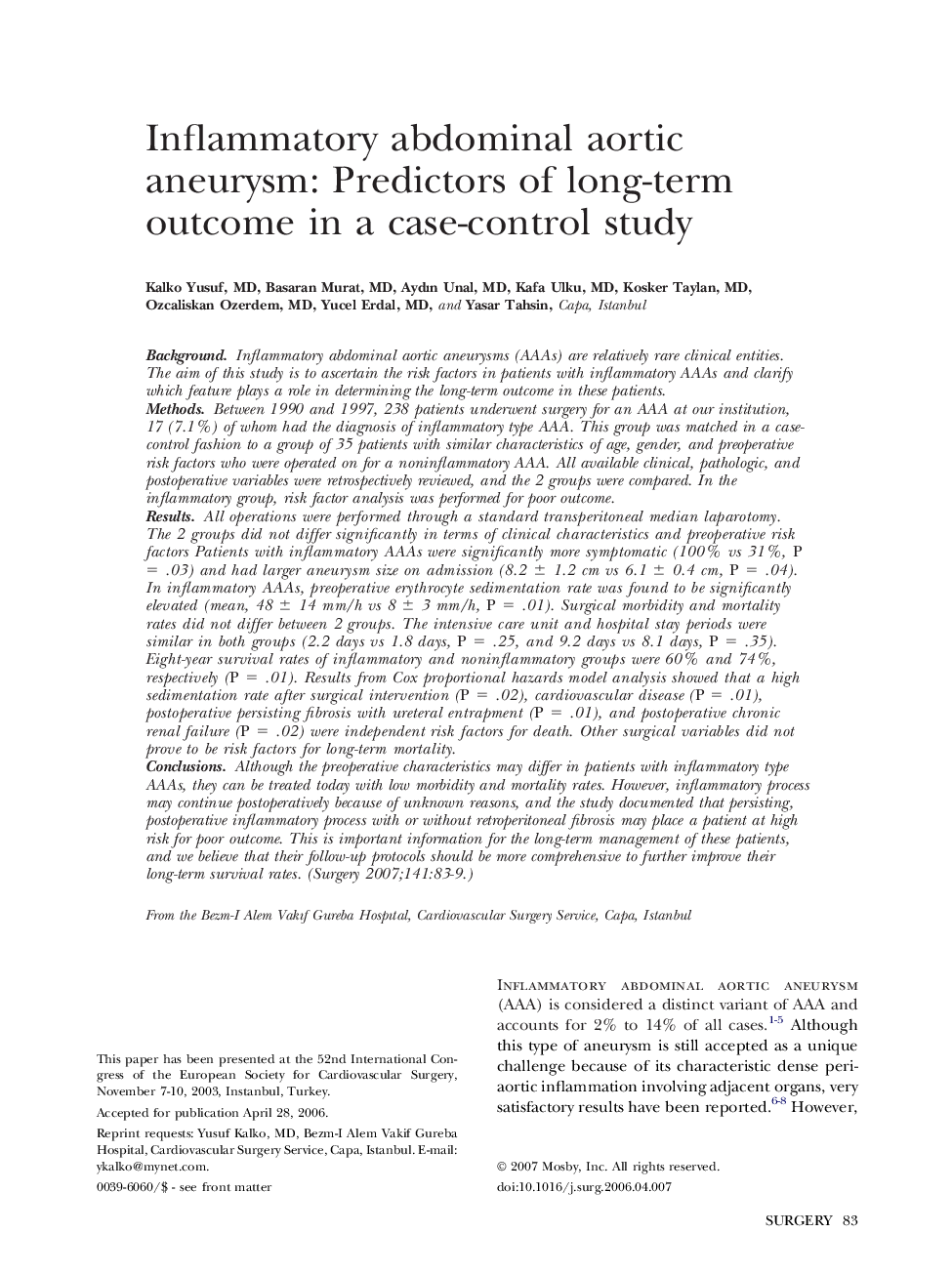| کد مقاله | کد نشریه | سال انتشار | مقاله انگلیسی | نسخه تمام متن |
|---|---|---|---|---|
| 4309735 | 1289322 | 2007 | 7 صفحه PDF | دانلود رایگان |

BackgroundInflammatory abdominal aortic aneurysms (AAAs) are relatively rare clinical entities. The aim of this study is to ascertain the risk factors in patients with inflammatory AAAs and clarify which feature plays a role in determining the long-term outcome in these patients.MethodsBetween 1990 and 1997, 238 patients underwent surgery for an AAA at our institution, 17 (7.1%) of whom had the diagnosis of inflammatory type AAA. This group was matched in a case-control fashion to a group of 35 patients with similar characteristics of age, gender, and preoperative risk factors who were operated on for a noninflammatory AAA. All available clinical, pathologic, and postoperative variables were retrospectively reviewed, and the 2 groups were compared. In the inflammatory group, risk factor analysis was performed for poor outcome.ResultsAll operations were performed through a standard transperitoneal median laparotomy. The 2 groups did not differ significantly in terms of clinical characteristics and preoperative risk factors Patients with inflammatory AAAs were significantly more symptomatic (100% vs 31%, P = .03) and had larger aneurysm size on admission (8.2 ± 1.2 cm vs 6.1 ± 0.4 cm, P = .04). In inflammatory AAAs, preoperative erythrocyte sedimentation rate was found to be significantly elevated (mean, 48 ± 14 mm/h vs 8 ± 3 mm/h, P = .01). Surgical morbidity and mortality rates did not differ between 2 groups. The intensive care unit and hospital stay periods were similar in both groups (2.2 days vs 1.8 days, P = .25, and 9.2 days vs 8.1 days, P = .35). Eight-year survival rates of inflammatory and noninflammatory groups were 60% and 74%, respectively (P = .01). Results from Cox proportional hazards model analysis showed that a high sedimentation rate after surgical intervention (P = .02), cardiovascular disease (P = .01), postoperative persisting fibrosis with ureteral entrapment (P = .01), and postoperative chronic renal failure (P = .02) were independent risk factors for death. Other surgical variables did not prove to be risk factors for long-term mortality.ConclusionsAlthough the preoperative characteristics may differ in patients with inflammatory type AAAs, they can be treated today with low morbidity and mortality rates. However, inflammatory process may continue postoperatively because of unknown reasons, and the study documented that persisting, postoperative inflammatory process with or without retroperitoneal fibrosis may place a patient at high risk for poor outcome. This is important information for the long-term management of these patients, and we believe that their follow-up protocols should be more comprehensive to further improve their long-term survival rates.
Journal: Surgery - Volume 141, Issue 1, January 2007, Pages 83–89